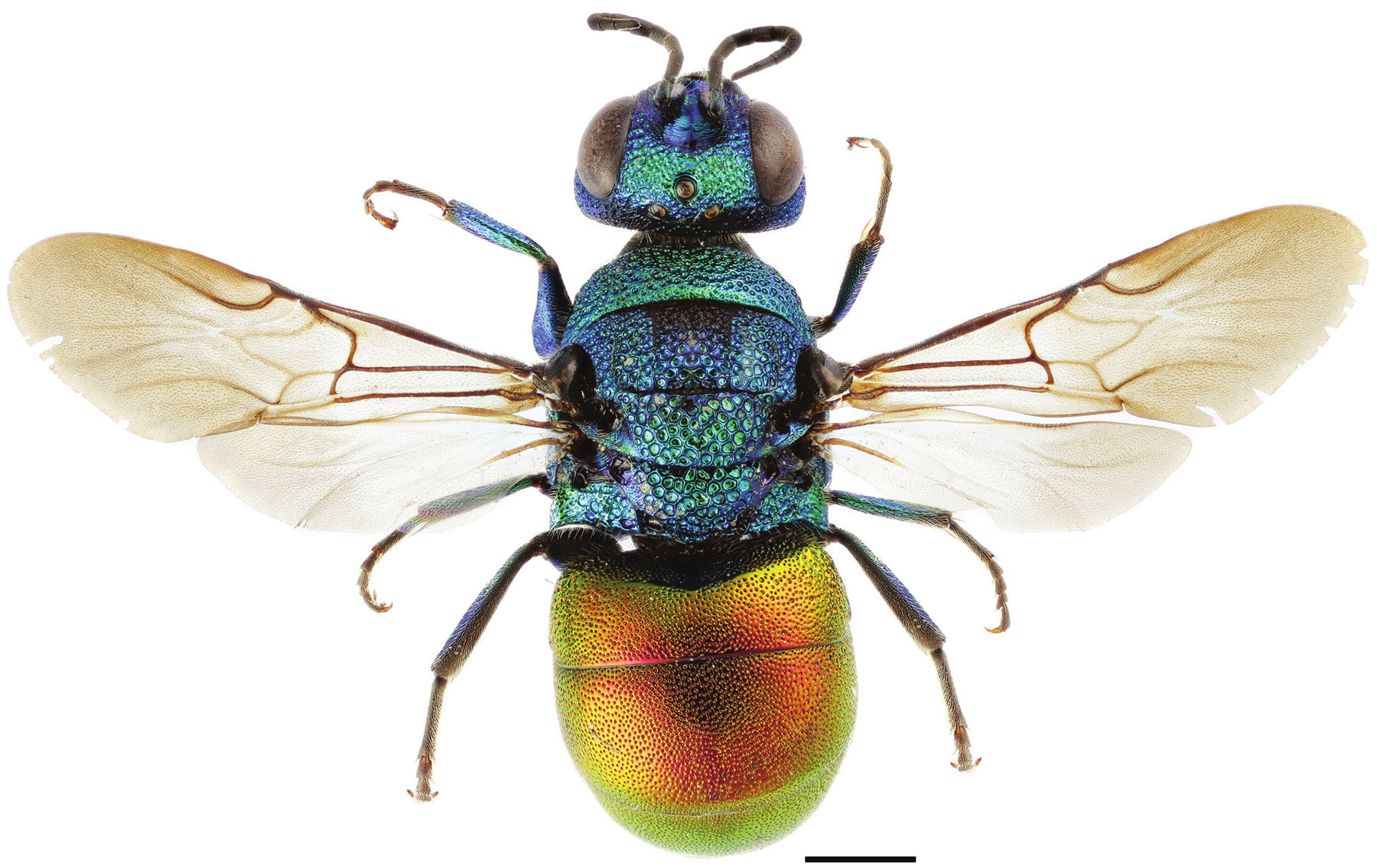Holopyga
This genus consists mainly of broad-bodied wasps, with a body length of 4–9 mm. Morphological characters of the genus include the strongly curved medial vein of the forewing (Fig. 7), the setose medial cell of the forewing, the multidentate tarsal claw (Fig. 3), the carinate and angulate mesopleuron and the evenly rounded posterior margin of T3 (without any distinct notches or prominences). Some species are sexually dimorphic with contrasting colouration in the different sexes (e.g. H. fervida). The biology of most species is poorly known. Apparently, the hosts consist of ground-nesting crabronid and sphecid wasps. Records stating megachilid solitary bees as hosts are questionable due to the lack of supporting data. Holopyga is a large genus with more than 90 recognised species worldwide. The vast majority of these, nearly 70 species, occur in the Palearctic Region (Kimsey and Bohart 1991, Arens 2004). A total of 43 species are known from Europe, and four have been found in the Nordic and Baltic countries (Rosa and Soon 2012, Paukkunen et al. 2014). We have divided the genus into species-groups according to Linsenmaier (1959).

